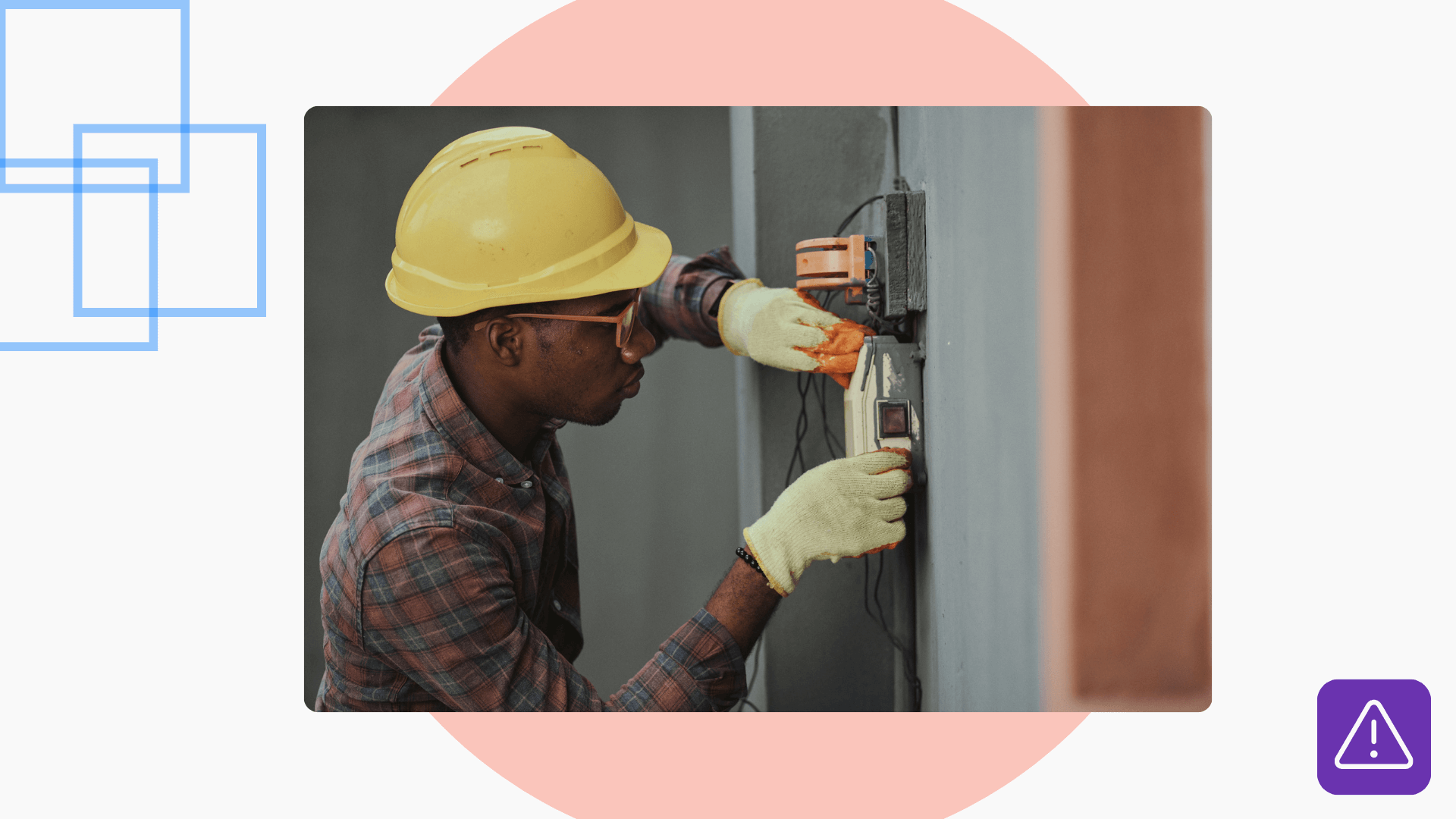Conducting an electrical safety toolbox talk will help your team reduce risks and prevent incidents. Because it applies to most (if not all) work environments, electrical safety is a key component of any EHS training program.
Free form!
Download this free hazard report form that your employees can use to notify you of the electrical hazards they find.
Electrical safety toolbox talk overview
In this electrical safety toolbox talk, we’ll answer the following questions:
- What are the different types of electrical safety incidents?
- What electrical safety hazards should you look out for?
- What measures can you take to protect yourself from electrical hazards?
With this information, you can more effectively identify and eliminate hazards in your work area. Plus, it has the added benefit of improving overall work conditions and the longevity of electrical equipment itself.
Types of electrical safety incidents
Examples of electrical safety accidents include:
- Electrocutions
- Falls from height (e.g., ladders or platforms)
- Electric shock
- Fires and explosions
- Burns
- Arc flashes
These incidents can cause serious injuries like burns, heart attacks, and even death. When it comes to incident prevention, proper equipment setup and maintenance is essential.
Electrical safety toolbox talk hazard sources
Electrical hazards can come from a variety of sources. It’s important to check the area for unsafe conditions before you start any work, so you can reduce the likelihood of an incident happening. Unsafe equipment setup or use is one of the biggest dangers you’ll encounter when it comes to electrical safety.
Here are some things to look out for:
- Overloaded circuits
- Exposed wires
- Faulty or damaged equipment
- Improper lockout tagout
Knowing what to look for is only the first step. You also need to implement safety measures each time you perform electrical work so that the area is as controlled as possible.
Personal safety measures
Personal safety is a major factor in electrical incidents. Oftentimes, workers get hurt when they’re not wearing the right gear for the task. This, plus a lack of situational awareness can increase safety risks and cause injuries or extensive property damage.
Here are the things you should do when working on or around electrical systems:
- Use the right tool for the right task.
- Wear gloves and safety glasses when working near electrical systems.
- Always follow the site’s lockout tagout procedures.
- Inspect equipment for damage and unusual settings before starting work.
- Alert others in the area when you’re about to perform electrical work.
- Never plug heavy equipment into power strips.
- Know where the emergency gear (fire extinguishers, first aid, etc.) is located.
- Do an arc flash risk assessment to identify potential issues.
The two main components of electrical safety are personal safety and equipment maintenance. You need to make sure you’re dressed properly for the work you’re planning to do. Once you’re ready, double check that all the equipment is set up properly and take steps to control hazard sources. If you do those two things, you can greatly reduce your risk of injury.




